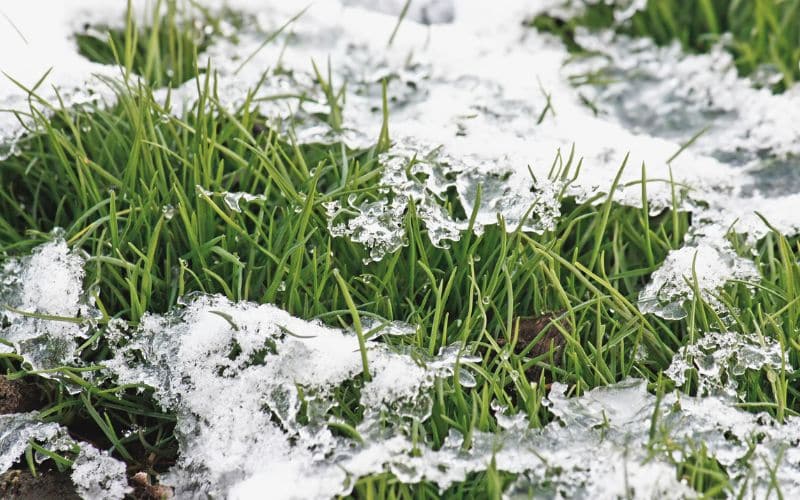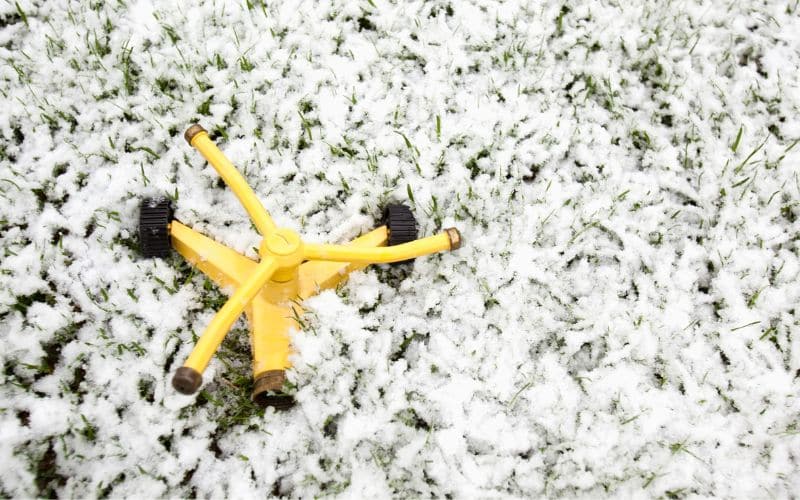
As the temperature drops and winter approaches, many homeowners find themselves asking, “Is it too cold to water my grass?” This article aims to answer this question and provide a comprehensive guide on how to care for your lawn during the winter months, especially when dealing with new sod. We will delve into the specifics of when and how to water your lawn, the potential risks of watering grass in cold weather, and how to protect your lawn from frost damage. This article is worth reading because it will equip you with the knowledge to maintain a healthy lawn throughout the year, even during the coldest months.
Understanding the Need to Water Your Lawn in Winter
Even during the winter months, your lawn needs water to stay healthy. The grass may appear dormant, but the roots are still active and require water to survive. However, the amount of water your lawn needs during this time is much less than during warmer months. The general rule of thumb is that your lawn needs about an inch of water per week, but this can vary depending on the specific type of grass and local weather conditions.
How Cold is Too Cold to Water My Grass?
The air temperature plays a significant role in determining when it’s too cold to water your grass. When the temperature drops below freezing, it’s best to avoid watering your lawn. Water droplets can freeze on the grass blades, causing damage and potentially killing the grass. It’s also important to consider the soil or ground temperature. If it’s too cold, the water won’t be able to penetrate the soil and reach the roots of your grass.
The Impact of Cold Temperatures on Sprinklers
Cold temperatures can also have a detrimental effect on your sprinkler system. When the temperature drops below freezing, any water left in the sprinkler system can freeze and cause damage. Therefore, it’s essential to drain your sprinklers and turn them off before the first frost. It’s generally not recommended to run sprinklers in winter, especially during a cold snap. Running sprinklers in winter, especially during a cold snap, can be detrimental to your sprinkler system. The freezing temperatures can cause any water left in the sprinkler system to freeze, leading to potential damage. To prevent this, it’s important to drain your sprinklers and turn them off before the first frost.

The Importance of Watering New Sod in Winter
If you’ve recently installed new sod, it’s crucial to keep it well-watered, even during the winter months. New sod needs more water than mature grass to establish its roots. However, you should avoid watering new sod when frost is present as it can lead to frost damage. Instead, aim to water the sod during the warmer parts of the day.
How to Avoid Watering Your Lawn When the Temperature Drops
When the temperature drops, it’s best to adjust your watering schedule and reduce watering to winter levels. You can also use a layer of mulch to help retain moisture in the soil. Mulch acts as an insulator, keeping the soil warmer and reducing the need for watering.
The Risk of Frost Damage to Your Lawn
Frost damage is a significant concern for lawns during the winter months. When water freezes on the grass blades,it can cause the cells to burst, leading to damage or even death of the grass. To avoid frost damage, it’s best to water your lawn early in the day, allowing the water to absorb before the temperature drops in the evening.
Sod Installation and Care During Winter Months
Installing sod during the winter months can be a challenge due to the cold temperatures that can freeze water and make the soil hard. However, with proper care, it’s possible to protect new grass and keep your new lawn healthy. After sod installation, it’s crucial to water the sod regularly but avoid watering when frost is present. The aim is to keep the sod moist but not waterlogged.
Can Cold Temperatures Kill Your Grass?
Extreme cold temperatures can indeed kill your grass, especially young grass sprouts or new sod. However, mature grass is generally more resilient and can survive the winter dormancy period. It’s important to note that different types of grass have different levels of cold tolerance. Some grass types can withstand colder temperatures better than others.

Maintaining Your Lawn During the Winter Months
Maintaining your lawn during the chilly winter months involves more than just watering. It’s also about protecting your grass from the harsh elements. This can involve covering your lawn with a protective layer of straw or frost cloth during particularly cold periods. It’s also important to keep off the lawn as much as possible during this time to avoid damaging the grass.
Preparing Your Lawn for Spring: The Benefits of Watering Grass in Cold Weather
While it may seem counterintuitive, watering your grass in cold weather can actually help prepare your lawn for spring. Even dormant grass still needs moisture to survive, and providing this water during the winter can help your lawn bounce back more quickly when warmer weather arrives.
Key Takeaways
- Your lawn still needs water during the winter months, but much less than during warmer weather.
- Avoid watering your lawn when the air temperature drops below freezing to prevent frost damage.
- Cold temperatures can damage sprinklers, so it’s important to drain and turn off your sprinkler system before the first frost.
- New sod requires careful watering during the winter to help establish its roots.
- Adjust your watering schedule and reduce watering to winter levels when the temperature drops.
- Frost damage can kill your grass, so it’s best to water early in the day to allow the water to absorb before temperatures drop in the evening.
- With proper care, it’s possible to install and maintain sod during the winter months.
- Extreme cold can kill grass, especially young sprouts or new sod, but mature grass is generally more resilient.
- Protecting your lawn from the harsh winter elements can help maintain its health.
- Watering your grass in cold weather can help prepare your lawn for spring.
Colin Macmillan is a seasoned entrepreneur and the CEO of Riverwood Landscape, a leading landscaping company based in Canada. He has been at the helm of the company since leaving high school, demonstrating his strong leadership skills and business acumen.
Colin’s expertise lies in various aspects of landscaping, including lawn care, interlocking, sod installation, and commercial maintenance. His hands-on approach and dedication to the craft have been instrumental in building Riverwood Landscape into a reputable brand.
One of his most notable achievements is the creation of a successful landscape franchise that services multiple locations. This accomplishment underscores his strategic thinking and ability to scale operations effectively.
Colin has also had the privilege of working with Guelph Hospital for landscaping and maintenance, a testament to the trust and reliability that his company has earned over the years.
His professional mission is to offer the best services and experiences for customers, a goal that he tirelessly pursues. Colin’s commitment to excellence and customer satisfaction continues to drive the growth and success of Riverwood Landscape.








